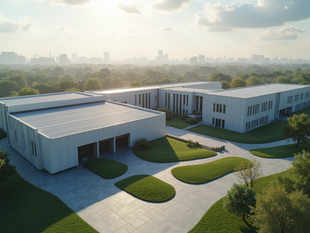
Education is a powerful key that unlocks doors to opportunity, growth, and transformation. When we focus on empowering communities through education, we ignite a spark that can light up entire regions. Today, I want to share with you how education and skills training are changing lives in Hmong communities, especially in rural Laos. This journey is about hope, resilience, and the incredible power of learning to break cycles of poverty and build brighter futures.
Imagine a world where every young person, regardless of their background, has access to the tools they need to succeed. That world is within reach, and it starts with education and skills training tailored to the unique needs of the Hmong people. Let’s explore how this transformation is happening and how you can be part of this inspiring movement.
The Power of Skills Training for Hmong Communities
Skills training is more than just learning a trade or a craft. It’s about equipping individuals with practical knowledge that opens doors to employment, entrepreneurship, and self-sufficiency. For Hmong youth in rural Laos, skills training offers a lifeline to a future filled with promise.
By focusing on vocational skills such as agriculture, tailoring, carpentry, and technology, young people gain confidence and independence. These skills are not only relevant locally but also connect them to broader markets and opportunities. When communities invest in skills training, they invest in sustainable development.
Here are some key benefits of skills training for Hmong communities:
Economic empowerment: Skills lead to jobs and income generation.
Community resilience: Trained individuals contribute to local development.
Cultural preservation: Traditional crafts and knowledge are passed down.
Gender equality: Training programs encourage participation from young women.
Global connections: Skills open doors to international partnerships and markets.
By nurturing these skills, we create a ripple effect that strengthens families and uplifts entire communities.
How Education Breaks Barriers and Builds Bridges
Education is the foundation upon which dreams are built. For many Hmong youth, access to quality education has been limited by geography, poverty, and language barriers. But when education becomes accessible, it transforms lives in profound ways.
Learning literacy, numeracy, and critical thinking skills empowers young people to navigate the world with confidence. It opens doors to higher education and better job prospects. More importantly, education fosters a sense of belonging and self-worth.
Community-based education programs that respect cultural identity and language create safe spaces for learning. These programs encourage participation and ensure that education is relevant to the students’ lives and aspirations.
Practical steps to enhance education access include:
Building local schools and learning centers that are accessible to remote villages.
Training teachers from within the community who understand cultural nuances.
Providing scholarships and financial support to reduce economic barriers.
Incorporating bilingual education to bridge language gaps.
Engaging families and elders to support and value education.
When education is inclusive and culturally sensitive, it becomes a powerful tool for social change.
Are Hmong people Filipino?
This question often arises due to the diverse ethnic tapestry of Southeast Asia. However, the Hmong people are not Filipino. They are an ethnic group originally from the mountainous regions of China, Vietnam, Laos, and Thailand. Their rich culture, language, and traditions are distinct and deeply rooted in these areas.
Understanding this distinction is important because it highlights the unique challenges and opportunities faced by the Hmong community. Their history of migration and resilience shapes their identity and informs the kind of educational and skills training programs that best serve them.
Recognizing the Hmong as a distinct group helps tailor support efforts that respect their heritage while promoting integration and development. It also fosters greater awareness and appreciation among global donors and volunteers who want to make a meaningful impact.
How You Can Support Education and Skills Training for Hmong Youth
Empowering Hmong communities through education and skills training is a collective effort. Whether you are a donor, volunteer, or advocate, your involvement can create lasting change. Here are some practical ways you can contribute:
Donate to organizations that focus on education and vocational training in rural Laos.
Volunteer your time and expertise to teach or mentor young people.
Advocate for policies that increase funding and support for minority education.
Raise awareness by sharing stories and successes from Hmong communities.
Support local businesses and artisans to help sustain economic growth.
Every action, big or small, adds up to a wave of positive transformation. By working together, we can ensure that no young person is left behind due to lack of opportunity.
One inspiring example is the work done by Turning a Dream into an Opportunity, which is dedicated to providing access to education and skills training for Hmong youth. Their community-driven approach and strategic partnerships are making a real difference.
Lighting the Path Forward: A Vision for Sustainable Growth
The journey to empower Hmong communities through education and skills training is ongoing. It requires dedication, innovation, and a shared vision for a better future. But the rewards are immeasurable.
Imagine a generation of Hmong youth who are confident, skilled, and ready to lead their communities toward prosperity. Picture villages where education is celebrated, and every child has the chance to dream big. This vision is within reach.
To keep this momentum going, we must:
Invest in infrastructure that supports learning and training.
Foster partnerships between local communities, governments, and international organizations.
Encourage entrepreneurship to create jobs and stimulate local economies.
Promote cultural pride alongside modern education.
Monitor and evaluate programs to ensure they meet community needs.
Together, we can build a future where education is the bridge that connects dreams to reality.
Empowering Hmong communities through education and skills training is more than a mission - it’s a movement. It’s about lighting the way for young people to rise above challenges and seize their potential. When you support this cause, you become part of a story of hope, resilience, and transformation. Let’s keep the flame burning bright and turn dreams into opportunities for generations to come.





